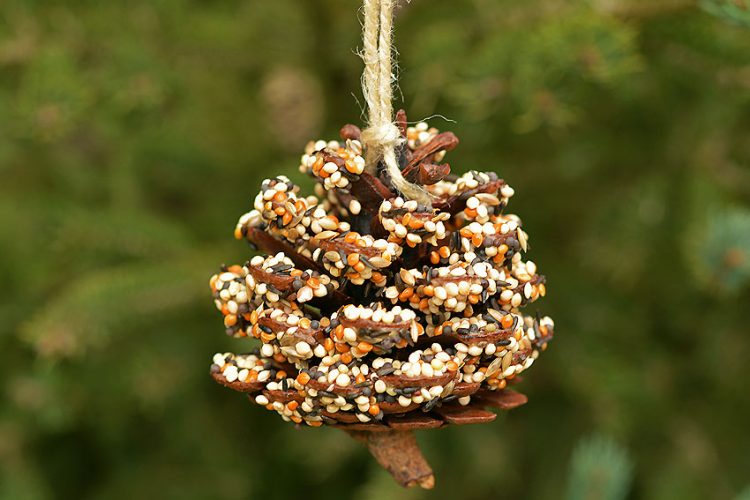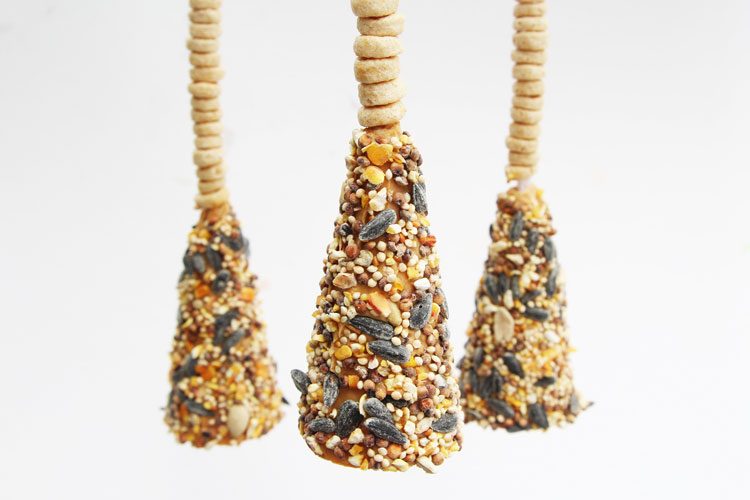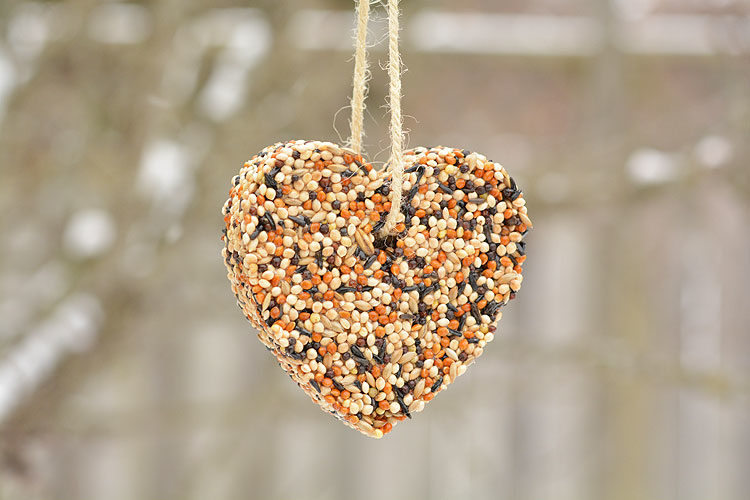Hang your homemade bird feeders from tree branches, metal garden hooks, flower basket hangers, or place them in a window box for a closer look at visiting birds. Whether you’re crafting with kids or making them solo, this nature-friendly Easter craft is the perfect way to celebrate the season while supporting local wildlife!
Helpful Tips:
What type of birdseed should I use for my egg shaped bird feeder?
The best birdseed for your Easter egg bird feeder depends on the types of birds native to your area. To find the right mix, check online resources or visit a local garden center or wild bird supply store for expert recommendations. You’ll also want to consider which birds you’d like to attract—and which ones you’d prefer to keep away! For our birdseed Easter eggs, we used a songbird seed mix with small, easy-to-compress seeds that fit well into the egg mold. This mix worked great for our local feathered friends, ensuring they had a tasty and accessible treat.
Do I have to use gelatin to make a bird feeder ornament?
No, there are definitely other options. Gelatin works well for this project, creating an egg shape that holds up well. But if you don’t like working with gelatin for dietary or religious reasons, you can also use agar agar. Agar agar is a vegan, plant-based alternative to gelatin, but it’s much more powerful, so a little goes a long way! Unlike gelatin, it needs to be boiled on the stove to fully dissolve and activate its thickening properties. Or, for a different type of bird feeder, follow our simple tutorial and use peanut butter to make a pinecone bird feeder!
Are gelatin and cooking spray safe to use in birdseed ornaments?
All the ingredients in these Easter egg bird feeders are safe for birds to consume. Here’s what we learned about using gelatin and cooking spray in homemade birdseed ornaments: Gelatin is commonly used in birdseed ornaments to help the seeds stick together. It’s safe for birds in small amounts, as long as it’s unflavoured gelatin. Avoid flavoured varieties, as they contain added sugars or artificial sweeteners that can be harmful to birds. Another key factor is temperature. These birdseed Easter eggs are best used in winter or early spring when temperatures stay cool. Warmer weather increases the risk of mold growth, which can be dangerous for birds and other wildlife. Cooking spray is also considered safe for wild birds. The Cornell Lab of Ornithology even uses it when making birdseed cookies, which suggests it poses no major risk. However, aerosol sprays in general can be harmful if used with birds present, so it’s best to apply the spray in a well-ventilated area if you have pet birds at home. If you’re concerned about oil residue, simply pat the birdseed egg with a paper towel after unmolding to remove the excess before placing it outdoors.
What’s the best place to hang my egg bird feeder?
Choosing the right spot for your Easter egg bird feeder ensures that birds can easily access it while keeping unwanted visitors away. Be sure to hang the feeder where birds can comfortably perch and eat. Placing it near tree branches, on a shepherd’s hook, or on a sturdy plant hanger can give birds a place to land while they enjoy their treat. You can also use a multi-level shepherd’s hook to allow hanging the ornament and perching! If squirrels or other animals start hogging your egg-shaped bird feeder, try hanging it from thinner branches that won’t support their weight. You can also place it under a squirrel baffle to help keep the focus on feeding the birds. These birdseed eggs are sure to bring plenty of birdwatching joy! This Easter egg bird feeder is a fun and festive way to welcome spring, while giving backyard birds a tasty treat. Make a whole dozen and hang them throughout your yard to attract a variety of feathered visitors.
Here’s even more DIY bird feeder ideas:
How to Make Pinecone Bird Feeders Ice Cream Cone Bird Feeders Birdseed Ornaments
Where to buy:






























